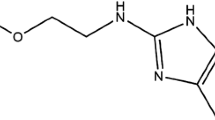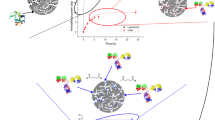Abstract
Design of affinity membrane adsorbers for the purification of biomolecules requires a consideration of loading, washing, and elution. Modelling and simulation of membrane adsorbers in literature is, however, strongly focused on the loading step. Therefore, in this work, a complete process model which takes all the different steps into account was developed. Breakthrough experiments in which human IgG was captured onto and eluted from Sartobind Protein A downscale modules were used for model validation and for estimation of the required model parameters. The experimentally observed breakthrough curves were independent of the applied flow rate and from these results linear correlations between lumped kinetic parameters and linear velocity were determined. During elution, desorption was best described by an irreversible reaction of first order in H+ concentration. Applicability of the developed model to computer-aided design was illustrated through a process analysis study in which the influence of the amount of loaded protein per cycle on the process yield and productivity was investigated.
Similar content being viewed by others
References
Arve, B. H. & Liapis, A. I. (1988). Modeling and analysis of elution stage of biospecific adsorption in finite bath. Biotechnology and Bioengineering, 31, 240–249. DOI: 10.1002/bit.260310310.
Brandt, S., Goffe, R. A., Kessler, S. B., O’Connor, J. L., & Zale, S. E. (1988). Membrane-based affinity technology for commercial scale purifications. Bio/Technology, 6, 779–782. DOI: 10.1038/nbt0788-779.
Castilho, L., Birger Anspach, F., & Deckwer, W. (2002). Comparison of affinity membranes for the purification of immunoglobulins, Journal of Membrane Science, 207, 253–264. DOI: 10.1016/S0376-7388(02)00257-0.
Demmer, W., & Nussbaumer, D. (1999). Large scale membrane adsorbers. Journal of Chromatography A, 852, 73–81. DOI: 10.1016/S0021-9673(99)00603-2.
Ghose, S., Hubbard, B., & Cramer, S. (2007). Binding capacity differences for antibodies and Fc-fusion proteins on protein A chromatographic materials. Biotechnology and Bioengineering, 96, 768–779. DOI: 10.1002/bit.21044.
Hahn, R., Schlegel, R., & Jungbauer, A. (2003). Comparison of protein A affinity sorbents. Journal of Chromatography B, 790, 35–51. DOI: 10.1016/S1570-0232(03)00092-8.
Hahn, R., Bauerhansl, P., Shimahara, K., Wizniewski, C., Tscheliessnig, A., & Jungbauer, A. (2005). Comparison of protein A affinity sorbents: II. Mass transfer properties. Journal of Chromatography A, 1093, 98–110. DOI: 10.1016/j.chroma.2005.07.050.
Liu, H., & Fried, J. (1994). Breakthrough of lysozyme through an affinity membrane of cellulose-Cibacron blue. AIChE Journal, 40, 40–49. DOI: 10.1002/aic.6904001707.
Montesinos-Cisneros, R., Ortega, J., Guzman, R., & Tejeda-Mansir, A. (2006). Breakthrough performance of linear-DNA on ion-exchange membrane columns. Bioprocess and Biosystems Engineering, 29, 91–98. DOI: 10.1007/s00449-006-0055-2.
Suen, S., & Etzel, M. R. (1992). A mathematical analysis of affinity membrane bioseparations. Chemical Engineering Science, 47, 1355–1364. DOI: 10.1016/0009-2509(92)80281-G.
Suen, S., & Etzel, M. R. (1994). Sorption kinetics and break-through curves for pepsin and chymosin using pepstatin A affinity membranes. Journal of Chromatography A, 686, 179–192. DOI: 10.1016/0021-9673(94)00701-2.
Tejeda, A., Ortega, J., Magana, I. & Guzman, R. (1999). Optimal design of affinity membrane chromatographic columns. Journal of Chromatography A, 80, 293–300. DOI: 10.1016/S0021-9673(98)00898-X.
Thomas, H. C. (1944). Heterogeneous ion exchange in a flowing system. Journal of the American Chemical Society, 66, 1664–1666. DOI: 10.1021/ja01238a017.
Thomas, H. C. (1948). Chromatography: a problem in kinetics. Annals of the New York Academy of Sciences, 49, 161–182.
van Beijeren, P., Kreis, P., Mutter, M., Sommerfeld, S., Bäcker, W., & Górak, A. (2007). Computer aided process design of affinity membrane adsorbers. Presented at the 1st European Process Intensification Conference, September 19–20, Copenhagen, Denmark.
Author information
Authors and Affiliations
Corresponding author
Rights and permissions
About this article
Cite this article
van Beijeren, P., Kreis, P., Hoffmann, A. et al. Computer-aided process design of affinity membrane adsorbers: a case study on antibodies capturing. Chem. Pap. 62, 458–463 (2008). https://doi.org/10.2478/s11696-008-0057-4
Received:
Revised:
Accepted:
Published:
Issue Date:
DOI: https://doi.org/10.2478/s11696-008-0057-4




